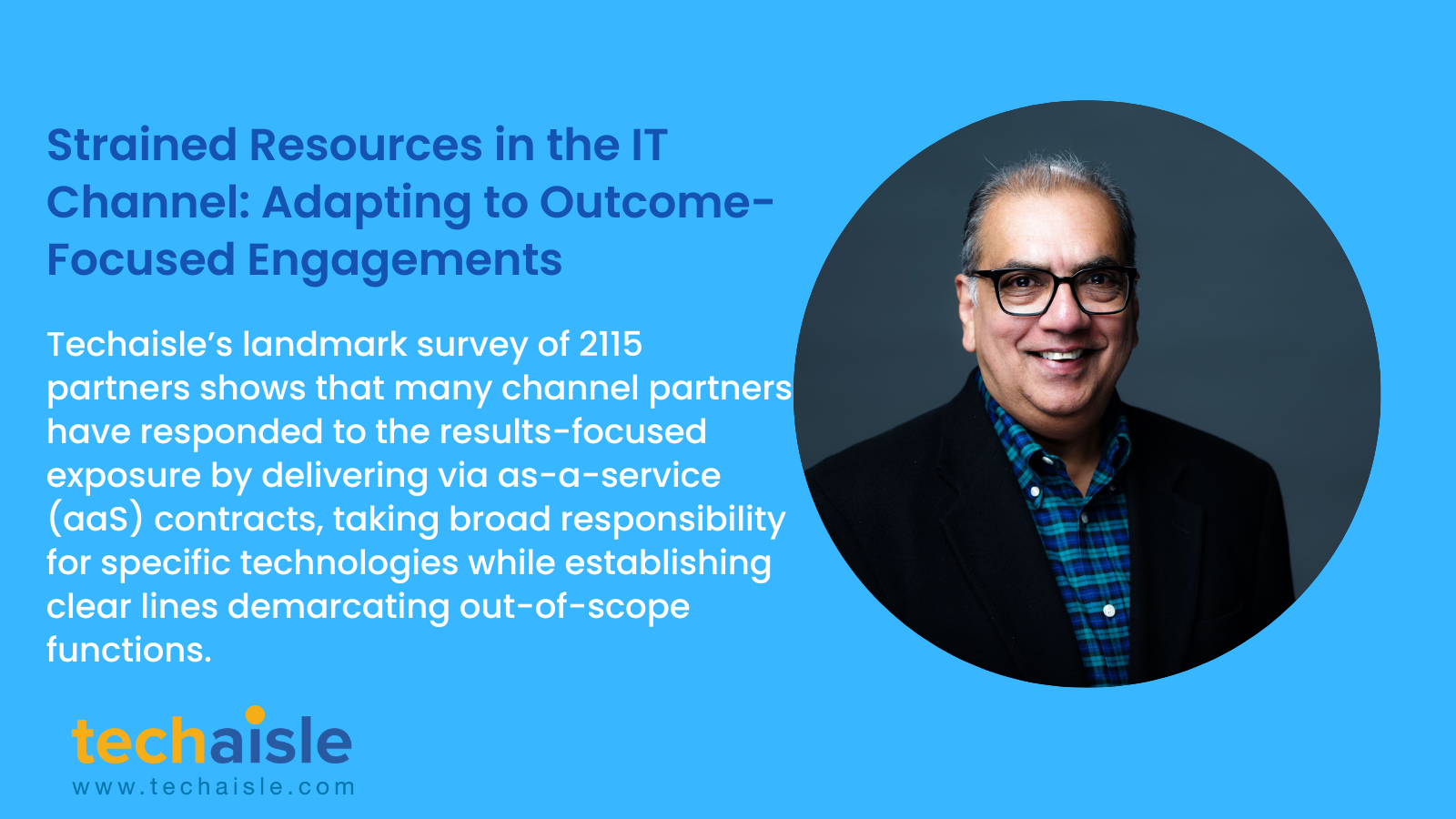Techaisle Blog
Strained Resources in the IT Channel: Adapting to Outcome-Focused Engagements
Techaisle’s landmark survey of 2,115 channel partners, representing a cross-section of the partner community, shows diverse concerns reflected in the business issues data stemming from a fundamental change in how the IT channel engages with customers. Like the IT function, the channel has typically served clients as a problem-solving option, able to plug a defined technology gap with a functioning system. However, as “business infrastructure” became indistinguishable from “digital infrastructure,” the definition of what IT needs to deliver has morphed. IT is now expected to support the business in ways that deliver tangible business benefits. The buyer community increasingly insists on outcome-focused project definitions, and procurement departments have started using shared-risk approaches, rather than traditional RFP-style responses to static requirements, to optimize the impact and value of systems that deliver new business functionality.

Many channel firms have responded to this results-focused exposure by delivering via as-a-service (aaS) contracts, taking broad responsibility for specific technologies while establishing clear lines demarcating out-of-scope functions. Client requirements, however, often extend beyond a specific service; in these cases, channel firms look to develop hybrid delivery models combining defined aaS capabilities with higher-variance integration activities. These aaS/hybrid approaches to outcome-focused, shared-risk engagements unlock significant growth potential. However, they strain the channel’s already-stretched resources: they require new skills in negotiation, solution scoping, contracting, delivery, success measurement, and partner management.
Evidence of the strain that this transition has wrought within the channel is seen in the evolution of the sales function within channel organizations. Techaisle’s survey asked respondents to react to six statements detailing potential changes experienced in their go-to-market activity.
More than 60% of channel partners report that increasing customer knowledge has resulted in a need for channel sales staff to be more innovative in approaching and developing opportunities. Nearly half report that they are “doing a lot more line-of-business selling” than just five years ago, and more than 40% state that aaS has “significantly changed” the attributes they look for in sales/business development professionals.
Follow-up questions on the survey drilled down into contract types and asked channel partners how their firms would allocate resources in response to this changing landscape. The results indicate no clear consensus within the channel regarding the best path forward.
Data on selling propositions paints an unmistakable picture of a channel amid evolution. The trend towards increased service emphasis has taken root, with services revenue averaging 57% in firms surveyed versus 43% for margin-poor product resale. However, the contracts used to obtain this revenue offer no such clarity: the proportion of channel contracts described as product-inclusive is an even 50% of all channel engagements, and “product-led” contracts account for an average of 48% of channel deals. Customer agreements that include recurring revenue terms represent most of the channel revenue today, but point-in-time transactions still represent 44% of the total.
Data on resource allocation is equally equivocal. Responding to a question asking partners about focus over the next year, each of the top six options – lead generation, pre- or post-sales support, building architecture or deployment skills, investing in training and certification – were cited by 40%-50% of the group. Most firms cannot afford to invest in all these options simultaneously, but equally clearly, there is no common understanding of which two or three are most likely to yield the best results.
When you subscribe to the blog, we will send you an e-mail when there are new updates on the site so you wouldn't miss them.














